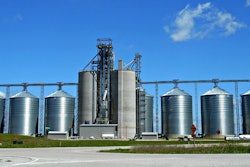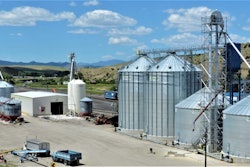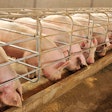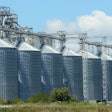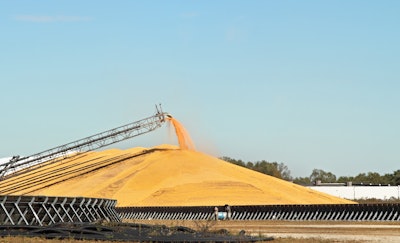
In the world of agriculture, the journey of cereal grains doesn't end at harvest; it merely takes a new turn. Post-harvest handling and storage are critical phases in ensuring that the hard work of cultivation and harvesting doesn't go to waste. Maintaining cereal quality during storage is not just a matter of economic importance but also, in modern times, a responsibility toward food security. Hence, the challenge of post-harvest quality preservation.
Cereal grains, such as wheat, corn, sorghum, rice and barley, are rich sources of nutrients and the backbone of the global food supply chain including livestock and poultry. However, these grains are susceptible to myriad quality-deteriorating factors once they leave the field. Moisture, temperature, pests and diseases are the primary adversaries that can compromise the quality of stored cereal grains.
Moisture management
One of the primary challenges in cereal grain storage is moisture management. Excessive moisture can lead to mold growth, mycotoxin production, and eventually severe grain deterioration. On the other hand, insufficient moisture can result in broken kernels, making the grains less marketable and at the same time vulnerable to pests and molds. Therefore, maintaining an optimal moisture by these two main methods remains critical.
Drying. Post-harvest quality assurance starts with proper drying immediately after harvest. Air drying and mechanical drying are common methods, with each having their own attributes. Monitoring moisture content with precision is crucial, as different grains have distinct safe moisture levels. In general, most grains are safe to store with a moisture content of 12% or less.
Aeration. Aeration is the controlled movement of air through stored grains. Proper aeration can help regulate temperature and moisture content, reducing the risk of hot spots and mold growth. This is particularly important in large storage facilities. Often aeration is achieved by moving grain, but this also entails the danger of ending with increased broken kernels.
Temperature control
Temperature is another vital factor in preserving cereal quality. Grain temperatures should be kept as low and as stable as possible to slow down internal and external biochemical processes, and also insect activity. Cool grain also has lower moisture-holding capacity, reducing the risk of mold growth. Temperature control can be achieved by the following two methods:
Aeration. Aeration manages moisture and helps in temperature control. In warmer climates, for example, running fans at night when the outside air is cooler can be effective in reducing grain temperature.
Grain cooling systems. In larger storage facilities, specialized grain cooling systems can be employed to maintain low temperatures consistently. This increases the final price of grains considerably, but it might be the only way to preserve quality in extremely hot and humid regions.
Pest and insect management
Pests, such as rodents and insects, are silent destroyers of stored cereal grains. They can consume or damage vast amounts of grains, contaminate them with toxins, and even introduce pathogens. Effective pest management is essential. For example, some speculate that the African swine fever virus that has plagued the swine industry for almost 20 years can be traced to grain contaminated at the field by wild boars. The following are offered as initial steps in pest and insect management.
Sanitation. Keep storage facilities and equipment clean to prevent attracting pests. Eliminate any spilled grains or residues. These should be intuitive but in most cases they are the major cause of problems.
Insect and rodent monitoring. Use traps and pheromone lures to monitor insect activity. Early detection can prevent infestations from spreading. Use a specialist for rodent control throughout all facilities.
Chemical control. Chemical treatments, such as insecticides, can be used in some regions (what is allowed should be checked against local authorities). However, care should be taken to follow safety guidelines and adhere to legal restrictions.
Fungal (mold) and mycotoxin control
Mycotoxins are toxic compounds produced by certain fungi (molds) that can contaminate stored grains, posing serious health risks to humans and animals. This is an extensive subject, but the following are a good start for controlling this risk.
Proper drying and moisture control. As mentioned, molds thrive in warm and high-moisture conditions. Effective drying and temperature control can significantly reduce the risk of mycotoxin contamination.
Regular sampling and testing. It is important in long-storage facilities to periodically sample and test stored grains for mycotoxins. If contamination is detected, it's crucial to identify the specific toxin and take appropriate action, such as segregation or disposal.
Fungicide application. In some cases (check again with local authorities), fungicides may be applied to prevent fungal growth. However, this should be done with caution and in compliance with regulations.
Advanced techniques for cereal quality preservation
While the basics of moisture control, temperature regulation, pest management and mycotoxin prevention are fundamental, modern technology offers advanced techniques to further enhance cereal quality preservation. Whether they are financially justified is matter for another discussion.
Modified atmosphere storage (MAS). This method involves altering the storage atmosphere by controlling gas concentrations, primarily oxygen and carbon dioxide, to slow down respiration and microbial activity in grains. This method can extend the shelf life of cereals significantly.
Inert gases. These include gases such as the well-known nitrogen. They can be used to displace oxygen in storage silos, reducing the risk of insect infestations and mycotoxin formation. This method is eco-friendly and highly effective, but apparently rather expensive.
Hermetic storage. This method involves sealing grains in airtight containers to create an oxygen-free environment. For example, this is what we attempt during the silage-making process. This method prevents insect infestations and fungal growth without the need for chemical treatments. Hermetic big-bags (totes) and even plastic containers are becoming increasingly popular for small-scale storage.
Remote monitoring. Modern technology allows for the remote monitoring of storage facilities. Sensors can track temperature, humidity and gas levels, sending real-time data to a central control system. This enables prompt action when conditions deviate from the optimal range.
Integrated pest management (IPM). This term refers to a holistic approach that combines various strategies to manage pests, including cultivation practices, biological controls and judicious use of chemicals. This approach minimizes the environmental impact while effectively preserving grain quality.
Preserving post-harvest cereal quality during storage is a multifaceted challenge that requires a combination of knowledge, careful management, and modern technology. Cereal grains are not just commodities; they are the foundation of our food and feed supply. Thus, ensuring their quality and safety during storage is not only an economic imperative but also a moral obligation.
Farmers, grain handlers, and food and feed processors must work together to implement best practices in post-harvest handling and storage. From moisture management and temperature control to pest and mycotoxin prevention, each step plays a crucial role in safeguarding the quality of our cereal grains.
As we navigate a world with evolving climate conditions and increasing demands for food security, the preservation of cereal quality during storage becomes ever more critical. With a commitment to best practices and the integration of advanced technologies, we can meet this challenge head-on, ensuring that the grains we store today will nourish generations to come.



